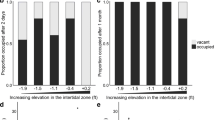Abstract
David Lack stimulated me to look at seabird ecology from an evolutionary viewpoint and to become particularly intrigued by the phenomenon of ‘holistic’ adaptation, which he chose as the theme of his Presidential address to the 1966 International Ornithological Congress. As soon as the adaptive significance of one trait, morphological, ecological or behavioural begins to emerge, it becomes apparent that it is part of a complex adaptive web. Perhaps the single most influential selection pressure is food. Lack built massively on this foundation, basing his theories about reproductive rates and the control of populations in higher animals on the concept of direct, density-dependent competition for food (Lack, 1954; 1966; 1968). In this chapter I trace some of the ways in which, in the Pelecaniformes, feeding habits have determined breeding strategies. The latter include the timing of breeding (the seasonal timing, the degree of synchronisation and the frequency), the lengths of the components of the breeding cycle, brood size and the age of first breeding. Are they all adapted towards the maximum production of young? In pursuing this theme I will stress social (behavioural) stimulation of breeding, which can be very important but which Lack seemed, to me at least, to underestimate. Although he removed some of the ambiguities in Darling’s early work on social factors he did not undertake research into them, or exploit the potential for detailed etho-ecological work on social stimuli and breeding success, of the Tinbergen — Lack axis, even though the results would have been highly germane to his great interest in recruitment.
Bryan Nelson (born 1932) followed a first in Zoology (St Andrews) with a D. Phil. at Oxford where (1959–60) he worked under David Lack. Following three years on the Bass Rock studying gannets (1961–63) he and his wife went off to uninhabited islands in the Galapagos (1964), extending his work on the Sulidae. In 1967 he worked on Christmas Island (Indian Ocean) and in 1968–69 in the Jordanian Desert, at Azraq. Since 1969 he has lectured in the Zoology Department at the University of Aberdeen. Currently, he is involved with work on Aldabra’s frigatebirds.
Preview
Unable to display preview. Download preview PDF.
Similar content being viewed by others
References
Brown, L. H. and Urban, E. K. (1969). The breeding biology of the Great white pelican (Onocrotalus pelecanus roseus) at Lake Shala, Ethiopia. Ibis, 111, 199–237.
Lack, D. (1954). The Natural Regulation of Animal Numbers. Oxford University Press, New York.
Lack, D. (1966). Population Studies of Birds. Oxford University Press, New York.
Lack, D. (1968). Ecological Adaptations for Breeding in Birds. Methuen, London.
Nelson, J. B. (1975). The breeding biology of frigatebirds: a comparative review. The Living Bird, 14, 113–155.
Nelson, J. B. (1969). The breeding ecology of the Red-footed booby in the Galapagos. J. Anim. Ecol., 38, 181–98.
Pearson, T. H. (1968). The feeding biology of sea-bird species breeding on the Fame Islands, Northumberland. J. Anim. Ecol., 37, 521–552.
Poulin, J. M. (1968). Reproduction du Fou de Bassan (Sula bassana) Ile Bonaventure (Quebec) (Perspective Ecologique). M.Sc. Thesis, Laval University, 110 pp.
Simmons, K. E. L. (1967). Ecological adaptations in the life history of the brown booby at Ascension Island. The Living Bird, 6, 187–212.
Snow, B. (1960). The breeding biology of the Shag (Phalacrocorax aristotelis) on the Island of Lundy, Bristol Channel. Ibis, 102, 554–575.
Stonehouse, B. (1962). The tropicbirds (genus Phaethon) of Ascension Island. Ibis, 103b, 124–161.
Editor information
Editors and Affiliations
Copyright information
© 1977 The contributors
About this chapter
Cite this chapter
Nelson, J.B. (1977). Some relationships between food and breeding in the marine Pelecaniformes. In: Stonehouse, B., Perrins, C. (eds) Evolutionary Ecology. Palgrave, London. https://doi.org/10.1007/978-1-349-05226-4_8
Download citation
DOI: https://doi.org/10.1007/978-1-349-05226-4_8
Publisher Name: Palgrave, London
Print ISBN: 978-0-333-28161-1
Online ISBN: 978-1-349-05226-4
eBook Packages: Biomedical and Life SciencesBiomedical and Life Sciences (R0)




